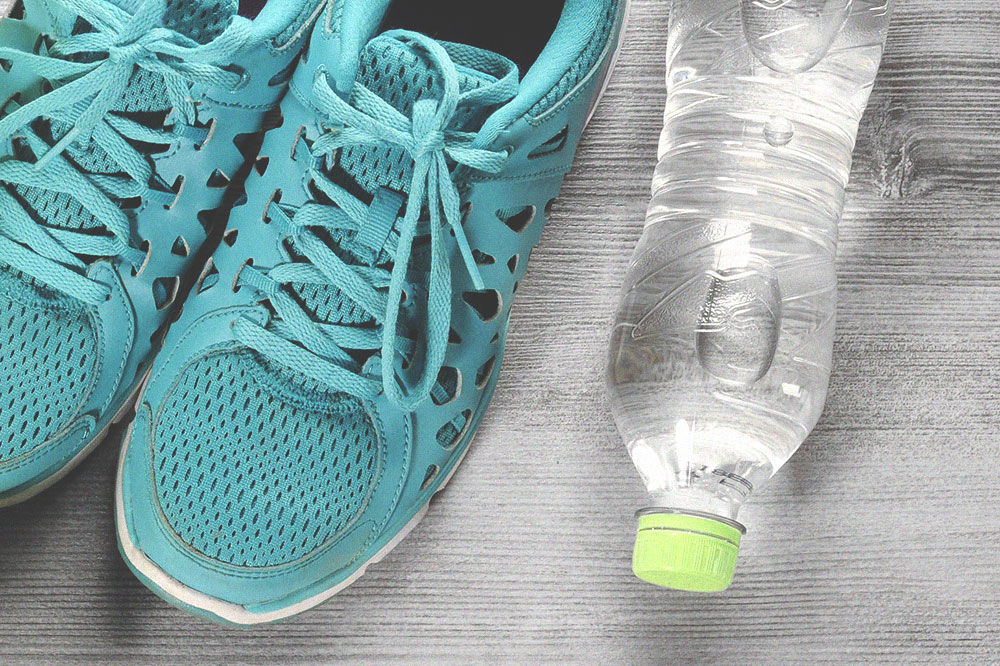It’s no secret that proper hydration is one of the most important factors in endurance sports, but how do you know if you’re getting enough? Read on for tips to get in the right amount for your body’s needs.
BY: CLAIRE SHORENSTEIN, MS, RDN, CDN
Hydration status is a key determinant of successful performance when it comes to endurance sports, such as long-distance running. Without enough hydration, speed and overall performance can suffer due to earlier fatigue, muscle spasms, and cramping.
Why does that happen?
During exercise, you lose water through sweat and breathing, increasing your risk of dehydration and making it essential to hydrate before, during, and after a workout. Sweat rates are highly individual and change in different weather conditions, so it’s important to monitor your hydration status day-to-day with the “pee test,” aiming for pale-colored urine. Heavier, slower runners with high sweat rates who run for many hours are at greatest risk.
On the other end of the spectrum, over-hydration (hyponatremia) can occur with serious consequences if you only drink plain water during endurance activities and do not replenish electrolytes (i.e. salts, including sodium, potassium, and chloride) that are lost in sweat.
With the dangers of over-hydration in mind, guidelines have changed from “staying ahead of thirst and drinking as much as you can tolerate” to “paying more attention to thirst and replenishing 100% of fluids lost in sweat.”
So how can you figure out how much water you should drink?
You can more accurately measure your sweat rate by performing a sweat test. Weigh yourself before and after a run (or other form of exercise), keeping track of how much fluid you consume during your training session. Each pound that you lose equates to 16 oz (2 cups) of sweat, and should be replenished. For example, if you lose three pounds (6 cups of sweat) and drank 2 cups of water or sports drink during your hour-long run, then your sweat rate is 8 cups per hour and you should drink 6-8 cups of fluid as part of your recovery.
Here are a few extra tips to keep in mind while you train and sweat, especially if you are training for a specific event:
BEFORE
Don’t leave hydration to the last minute! You should be consuming adequate fluids throughout the day, not just the hour before your workout.
- Carry a large water bottle around with you and aim to refill several times each day.
- If you are training for an event, plan and practice your pre-race hydration strategy before long runs.
- Drink the bulk of your fluids with breakfast 2-4 hours before race start, and sip 6-8 oz of fluid one hour before, to avoid having to run to the bathroom.
- It’s natural to feel an urge to pee as you nervously await a race start. It takes about 60 minutes for any fluid you consume to make it to the bladder, so any fluids you consume right before the start will be immediately used/converted to sweat.
DURING
Aim to replenish the amount of fluid that you are losing.
- Plain water usually is adequate for easy runs and cross-training efforts <60-90 minutes.
- If it is hot out and/or you are a heavy sweater, you may also require electrolytes during shorter workouts. Salt pills (e.g. SaltStick), tabs that you dissolve in your water (e.g. Nuun), or water with added electrolytes (e.g. Propel) are options.
- During long runs (or other endurance activities) and races, be sure to consume electrolytes. Your carb source (gels, sports drink, etc.) may be adequate, or you may need more (e.g. salt pills), but don’t overdo it.
- Many runners only drink 2 or 3 oz of fluid per aid station. Practice drinking similar amounts from a bottle during training to see if this is adequate for you, and be prepared to adjust your plan if weather conditions vary.
AFTER
Rehydrate within 30-60 minutes after exercise with both fluids and salts as determined by the sweat test or by using the “pee test.”
- Electrolyte replacement drinks and other sports products are convenient but not necessary. Real food contains salts too, and when consumed with water, can be adequate for recovery.
Train smart, and drink up!
Adapted from the original article.
Claire Shorenstein, MS, RDN, CDN is a NYC-based Registered Dietitian Nutritionist and Road Runners Club of America certified coach. As an avid runner over the past 20 years, Claire has competed in numerous team and solo running events from the 5km to 50-mile distance, and combines her personal running experience and expertise to help athletes achieve their performance goals. Learn more about Claire at Eat For Endurance.

